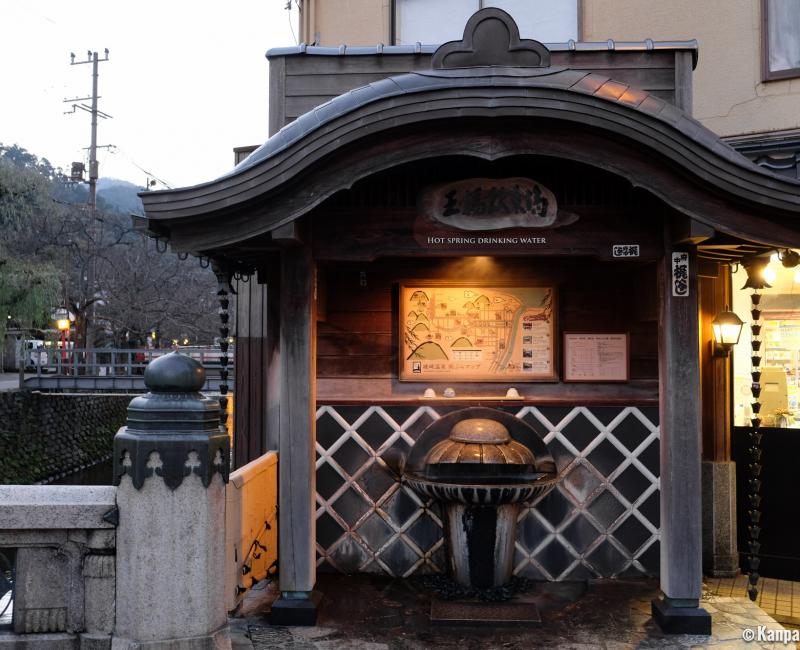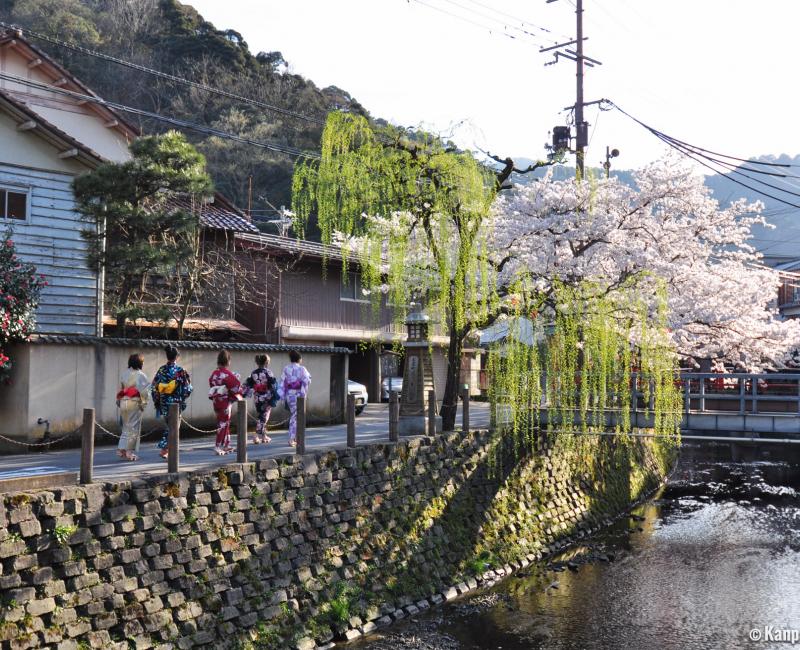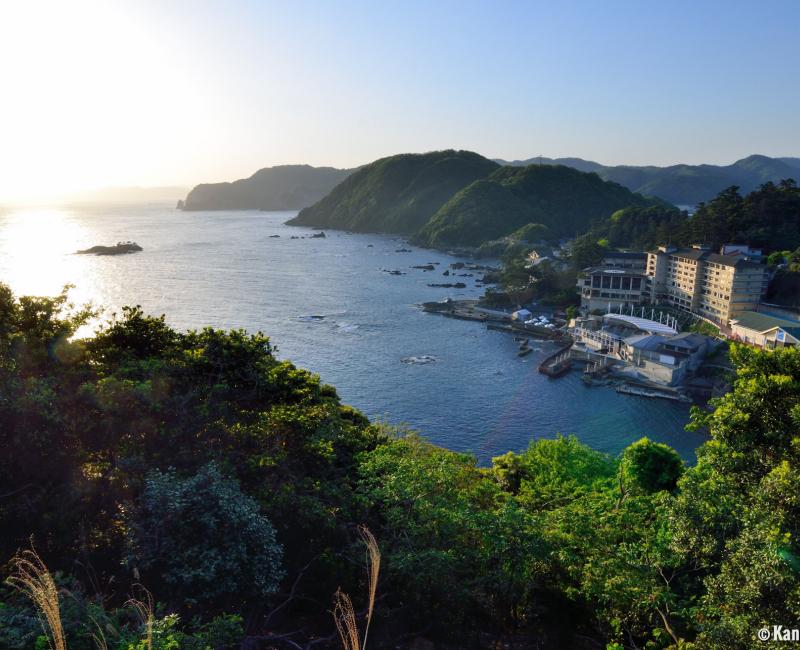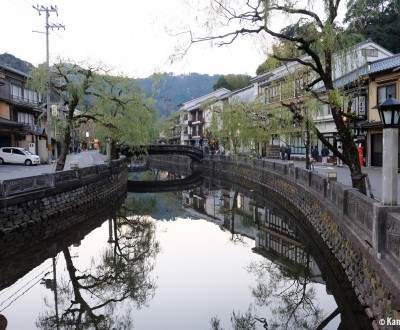Kinosaki
The 7 Onsen Village
Kinosaki is a touristic thermal spa town and a district of Toyooka city, Hyogo prefecture in the Kansai area. Renowned for its numerous and well-maintained natural springs, the water city is to be discovered clad in a light kimono, for the exotic pleasure of visitors.
Sato no Yu bath facility is indefinitely closed for renovation works since 2024, April 1rst
For hot baths lovers, Kinosaki is among the best places to walk around. In an authentic historical decor, visitors are immediately immersed in the traditional universe of Japanese thermal baths. There is everything here: healing hot waters, wooden houses, tatami rooms, human-scaled small streets where we wander wearing a yukata (light kimono 👘) and geta (a type of flip-flop made out of wood).
Well known by Japanese people for several centuries, this charming city, which carries both seaside and countryside atmospheres, has used hydrotherapy since the 7th century when the first hot springs were discovered.

The thermal spa resort mecca in Japan
Of course, several myths tell the story of the city’s birth. One says that the water city has been established around 717 by the Buddhist monk Dochi Shonin, who would have received a vision from an oracle; after praying for the population during a thousand days, he attended the gushing of a onsen ♨️ spring 🌸. It is still being said that the exact location of Kono-Yu, its oldest public bath, corresponds to the place where an Oriental stork would have been seen, curing her wounded wing thanks to the magical waters of this site.
In 1925, the Great Tajima earthquake created a fierce fire 🔥 which destroyed a big part of the region’s buildings. During the reconstruction, Kinosaki’s inhabitants decided to build it back identically, meaning keeping the wood architectures to stay faithful to their heritage. This choice is today a winning decision and gives a preserved ancient charm to the city.

Onsen baths hopping and traditional clothing
More than this historical portrait, the thermal spa city knows how to develop its appeal thanks to a very simple formula, all included for its visitors. The city, which counts 7 public baths, offers free access to all of them when booking a room in a ryokan. On the spot, they provide visitors with traditional clothing, beauty care products and sometimes towels to go bathing and therefore practice the "Sotoyu Meguri". So we enter in the following houses, where each of them present a particular architecture and water:
- Satono-yu, the biggest of the 7 onsen,
- Jizo-yu,
- Yanagi-yu, the smallest building but also the most traditional,
- Ichino-yu,
- Goshono-yu, the latest (fully renovated in 2005),
- Mandara-yu,
- Kono-yu, the oldest bath of Kinosaki.
The whole complex is concentrated in a restricted city center following the Otani River. The onsen institutions alternate with restaurants and shopping stores. Everything is easily walkable from the train 🚅 station. Streets become animated on afternoons and evenings with the sounds of the geta. In a holiday atmosphere, bathers also enjoy local specialties, seafood like the Matsuba crab in winter season and Wagyu beef from Tajima.
From a little bit more than 1,000 foreign visitors in 2011, Kinosaki Onsen region worked on its visibility to reach 36,000 international visitors in 2016 and 50,000 in 2019.

Kinosaki’s surroundings
For those willing to escape from the beaten thermal path, the region has plenty of nature outings, notably hikes of Mt Kuruhi and Daishi, which offer splendid views of the valley. The latter, whose access is located very close to the city, has Onsen-ji temple on his top, dedicated to the founder monk. In winter, snowy slopes of the mountains attract snowboarders and skiers.
A little more in the North, Japan Sea's seaside reveals beaches 🏖 with crystal clear waters with campings, such as Takeno and Keinohama (to a lesser extent), as well as the aquarium of Kinosaki Marine World, hooked to the cliff.
Down in the South, the Konotori no Sato natural park allows visitors to get closer to the famous storks, sacred bird in Japan and today classified as a protected species in Japan. It is also the occasion to remind all the ecological and environmental strategies settled by the region for more than 10 years to rehabilitate these waders in their natural environment. Genbudo Caves, from which is extracted basalt of the streets of Kinosaki, is worth having a look.

